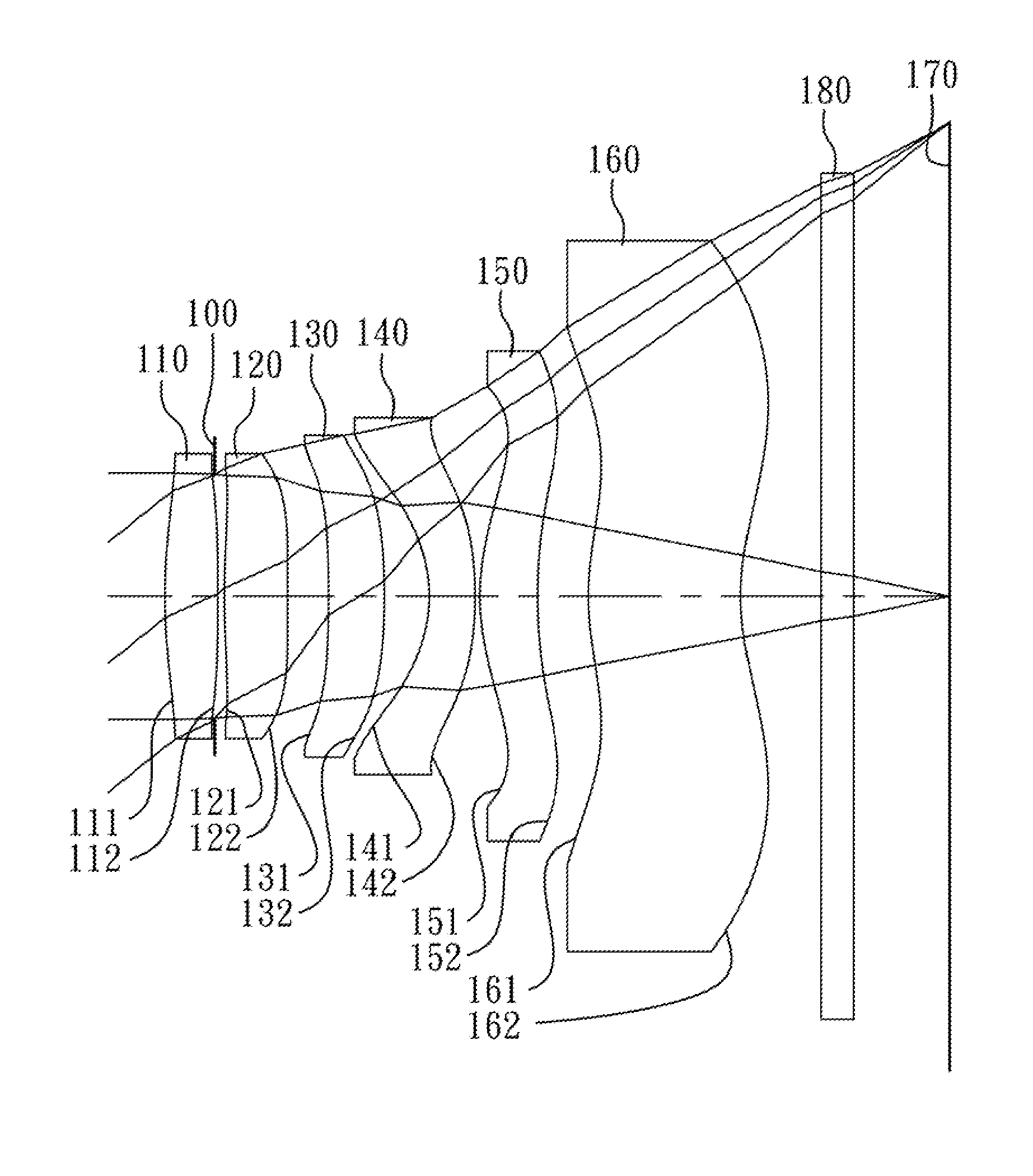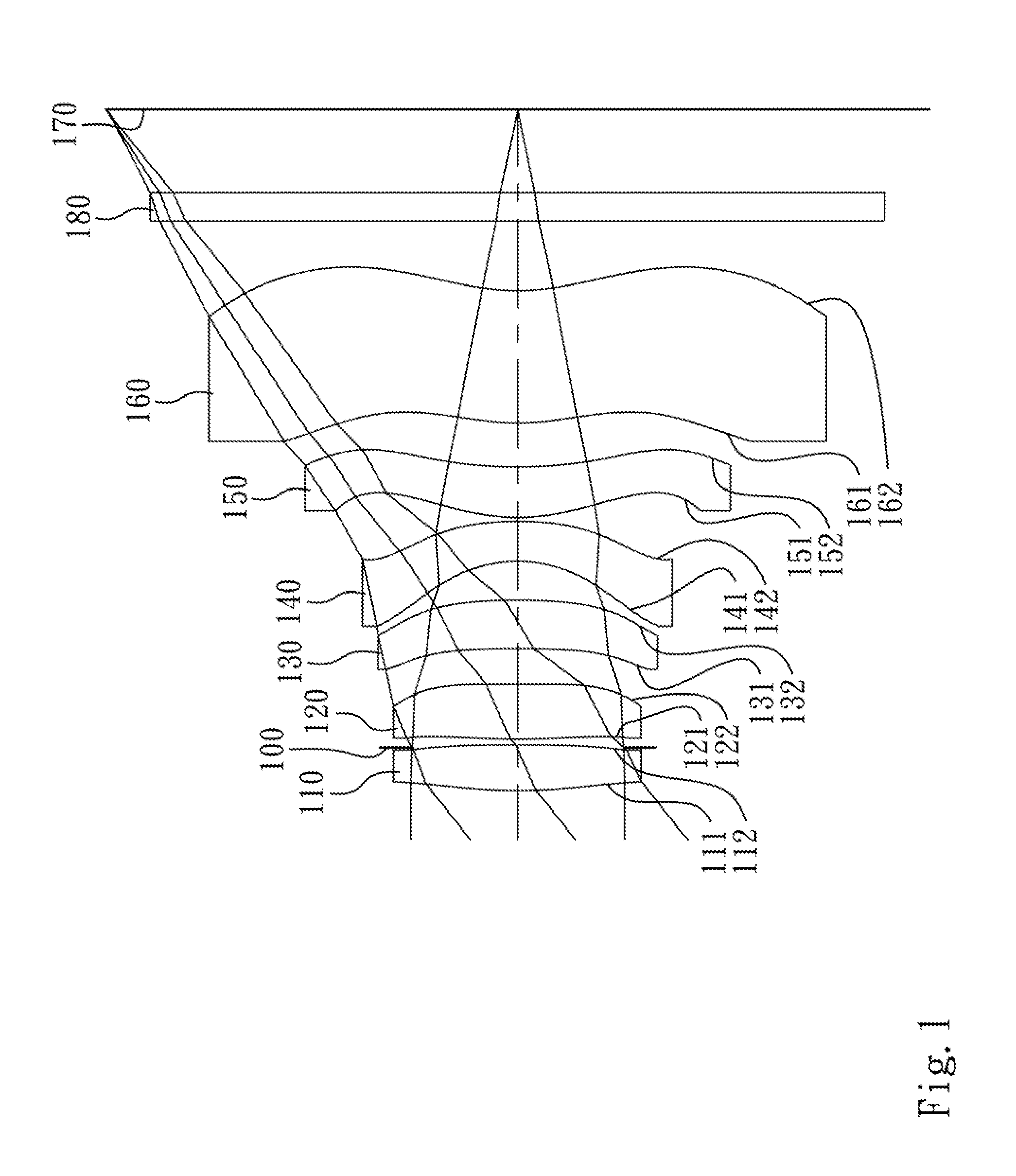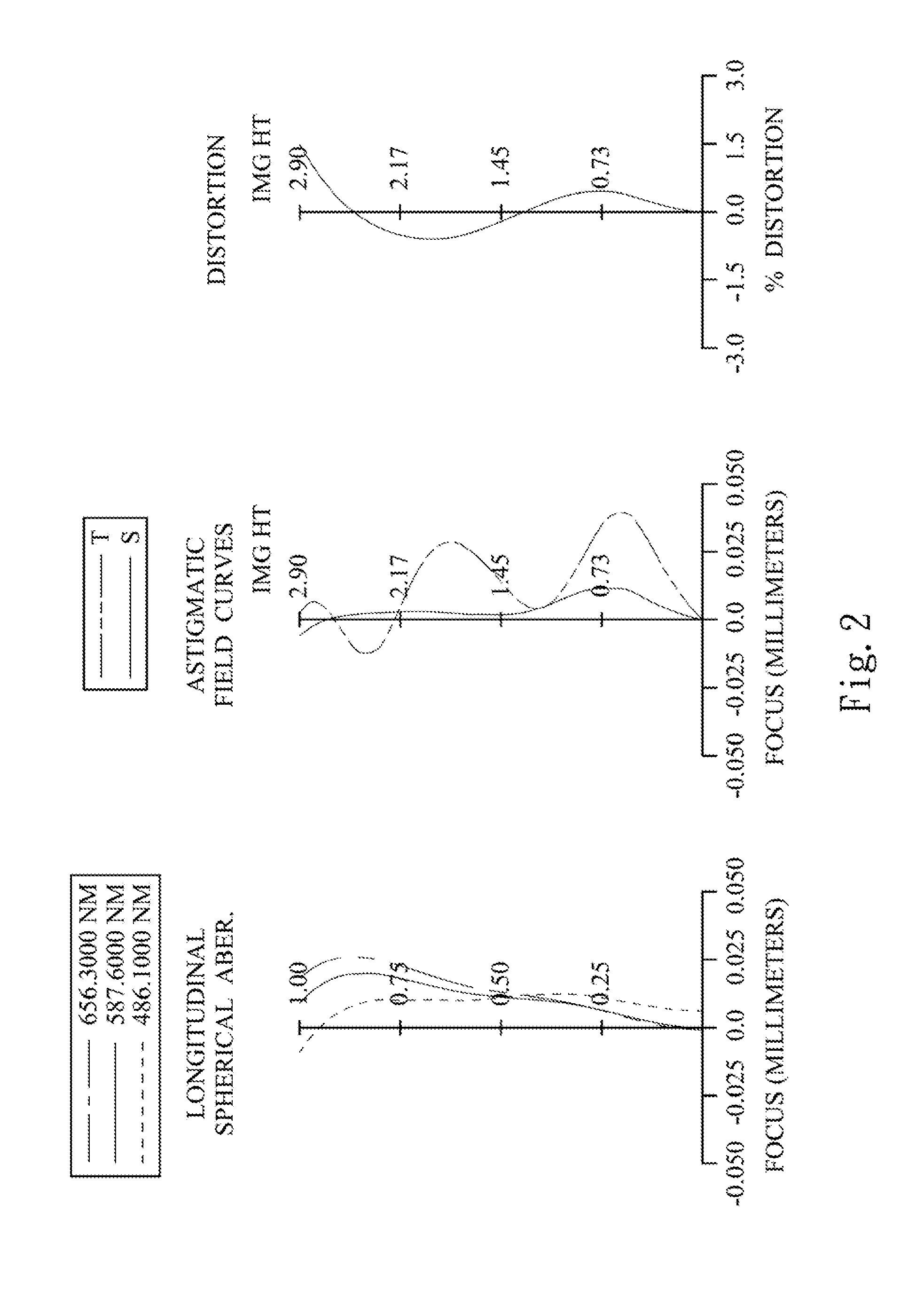Image lens assembly
a technology of image lens and assembly, which is applied in the field of compact image lens assembly, can solve the problems of easy generation of high-order aberration, inability to effectively suppress the incident angle of off-axis light onto the two lens elements (a fourth lens element and a fifth lens element), and the structure of conventional four-element lens cannot meet the requirements of optical lens system with high-end specifications
- Summary
- Abstract
- Description
- Claims
- Application Information
AI Technical Summary
Benefits of technology
Problems solved by technology
Method used
Image
Examples
1st embodiment
[0054]FIG. 1 is a schematic view of an image lens assembly according to the 1st embodiment of the present disclosure. FIG. 2 shows spherical aberration curves, astigmatic field curves and a distortion curve of the image lens assembly according to the 1st embodiment. In FIG. 1, the image lens assembly includes, in order from an object side to an image side, a first lens element 110, an aperture stop 100, a second lens element 120, a third lens element 130, a fourth lens element 140, a fifth lens element 150, a sixth lens element 160, an IR-cut filter 180 and an image plane 170.
[0055]The first lens element 110 with positive refractive power has a convex object-side surface 111 and a convex image-side surface 112. The first lens element 110 is made of plastic material and has the object-side surface 111 and the image-side surface 112 being aspheric.
[0056]The second lens element 120 with positive refractive power has a convex object-side surface 121 and a convex image-side surface 122. ...
2nd embodiment
[0083]FIG. 3 is a schematic view of an image lens assembly according to the 2nd embodiment of the present disclosure. FIG. 4 shows spherical aberration curves, astigmatic field curves and a distortion curve of the image lens assembly according to the 2nd embodiment. In FIG. 3, the image lens assembly includes, in order from an object side to an image side, a first lens element 210, an aperture stop 200, a second lens element 220, a third lens element 230, a fourth lens element 240, a fifth lens element 250, a sixth lens element 260, an IR-cut filter 280 and an image plane 270.
[0084]The first lens element 210 with positive refractive power has a convex object-side surface 211 and a concave image-side surface 212. The first lens element 210 is made of plastic material and has the object-side surface 211 and the image-side surface 212 being aspheric.
[0085]The second lens element 220 with positive refractive power has a convex object-side surface 221 and a concave image-side surface 222...
3rd embodiment
[0095]FIG. 5 is a schematic view of an image lens assembly according to the 3rd embodiment of the present disclosure. FIG. 6 shows spherical aberration curves, astigmatic field curves and a distortion curve of the image lens assembly according to the 3rd embodiment. In FIG. 5, the image lens assembly includes, in order from an object side to an image side, a first lens element 310, an aperture stop 300, a second lens element 320, a third lens element 330, a fourth lens element 340, a fifth lens element 350, a sixth lens element 360, an IR-cut filter 380 and an image plane 370.
[0096]The first lens element 310 with positive refractive power has a convex object-side surface 311 and a convex image-side surface 312. The first lens element 310 is made of plastic material and has the object-side surface 311 and the image-side surface 312 being aspheric.
[0097]The second lens element 320 with negative refractive power has a convex object-side surface 321 and a concave image-side surface 322....
PUM
 Login to View More
Login to View More Abstract
Description
Claims
Application Information
 Login to View More
Login to View More - R&D
- Intellectual Property
- Life Sciences
- Materials
- Tech Scout
- Unparalleled Data Quality
- Higher Quality Content
- 60% Fewer Hallucinations
Browse by: Latest US Patents, China's latest patents, Technical Efficacy Thesaurus, Application Domain, Technology Topic, Popular Technical Reports.
© 2025 PatSnap. All rights reserved.Legal|Privacy policy|Modern Slavery Act Transparency Statement|Sitemap|About US| Contact US: help@patsnap.com



